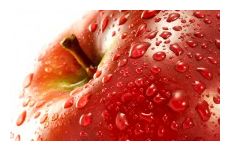
© Natural Society
An apple a day used to keep the doctor away, at least according to folk wisdom. But not any more - unless it's organically grown. Apples top the list of foods contaminated with pesticides, says the Environmental Working Group (EWG), an environmental health research and advocacy organization, in its annual report called "The Dirty Dozen™."
The listing of foods that may have toxic levels of pesticides is part of the group's Shopper's
Guide to Pesticide in Produce, which draws its data from tests conducted by the U.S. Department of Agriculture (USDA) and the Food and Drug Administration (FDA).
Even after washing, more than two thirds of the tens of thousands of food samples tested by the agencies showed pesticide residues. The most contaminated fruits were apples, strawberries, grapes, peaches and imported nectarines. Among vegetables, the most contaminated were celery, spinach, sweet bell peppers, cucumbers, potatoes, cherry tomatoes and hot peppers.
The contamination levels varied significantly between different foods. Potatoes had a higher total weight of pesticides than any other food crop.
A single grape tested for 15 different pesticides. So did sweet bell peppers.
Corn, which is widely used as an ingredient in processed foods, does not appear in the EWG's guide because as such it's no longer considered a fresh vegetable. Neither is soy. Still, concern over pesticide contamination should also include processed items.
In addition to its notorious "Dirty Dozen™" rating, the EWG also publishes a list of the least contaminated foods, called the "Clean Fifteen™." These show the lowest levels of pesticide residues and are generally safe for consumption. They include pineapple, papaya, mango, kiwi, cantaloupe, grapefruit, corn, onion, avocado, frozen sweet peas, cabbage, asparagus, eggplant, sweet potatoes and mushrooms.
Pesticides have long been linked to a number of health concerns, particularly to developmental problems in young children. Some pesticides have been found to be
carcinogenic, according to the Environmental Protection Agency (EPA).
There are currently about 350 different
pesticides registered with the government and permitted for use on food crops. Among the most toxic ones are organophosphate, a potent neuro toxin that can adversely affect brain development in children, even at low doses; and organochlorine,a once widely used pesticide that is now officially banned but still persists in the environment and continues to pollute plant foods grown in contaminated soil.
Particularly disconcerting is that pesticides have been found in processed
baby food. For example, green beans used for baby food tested positive for five pesticides, including organophosphate, and pears showed more than twice as many.
While there is only so much consumers can do to protect themselves and their loved ones against the exposure to pesticides and other toxins in their food supply, it is important to have the information available that allows for better-informed choices. Buying organically grown produce may be the best option, but it's not affordable for everyone. Mixing both organic and regular foods may be a workable compromise, thereby avoiding the worst offenders and limiting the damage to your budget with the rest.
Timi Gustafson R.D. is a registered dietitian, newspaper columnist, blogger and author of the book "The Healthy Diner - How to Eat Right and Still Have Fun"®,which is available on her blog and at amazon.com. For more articles on nutrition,health and lifestyle, visit her blog, "Food and Health with Timi Gustafson R.D.".
Reader Comments
to our Newsletter